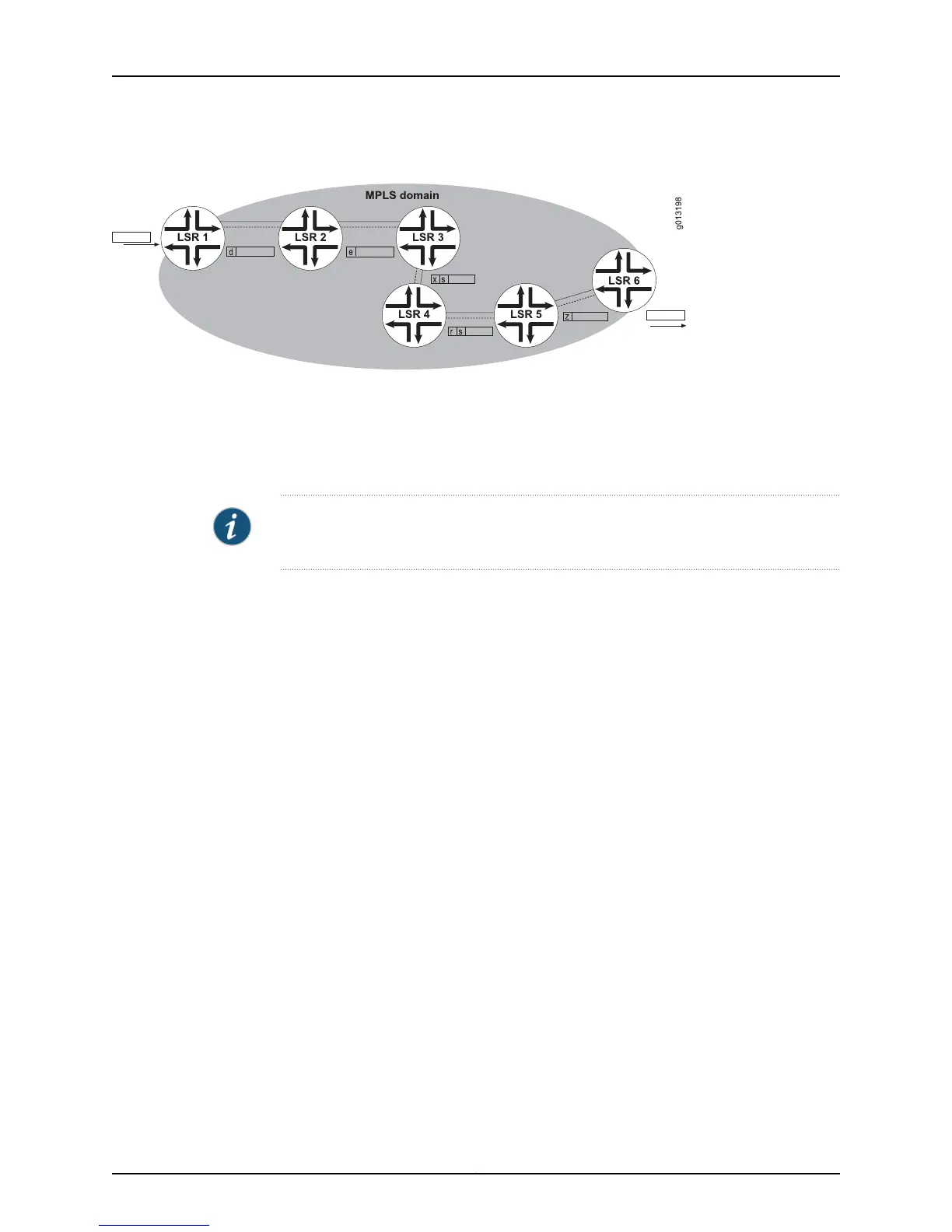Figure 49: Label Stacking
The configuration shown in Figure 49 on page 221 is an example of an LSP within an LSP
(a tunnel within a tunnel). The first LSP consists of LSR 1, LSR 2, LSR 3, LSR 5, and LSR
6. The second LSP consists of LSR 3, LSR 4, and LSR 5. The two LSPs have different
ingress and egress points. LSR 1 and LSR 6 are LERs. Less obviously, LSR 3 and LSR 5 are
also LERs, but for the internal LSP.
NOTE: Label stacking is typically employed for LSR peers that are not directly connected.
Figure 49 on page 221 is a simplified example to illustrate the concept of label stacking.
MPLS Labels and Label Spaces
MPLS uses labels from either the platform label space or the interface label space. ATM
AAL5 interfaces always use labels from only the interface label space. For every interface
using the interface label space, you must define the range available to the router for
labels in the interface label space. All other interface types always use labels from only
the platform label space. You cannot configure the range for the platform label space.
The platform label space is a large, single, unconfigurable pool of labels that can be
shared by the platform—all MPLS interfaces on a given virtual router. By contrast, interface
labels enable you to effectively create multiple smaller pools of labels, each used only
by a particular interface. When you configure interface labels, you restrict only a given
interface to a particular range of labels. Other interfaces in that VR can still use labels
from that space unless you restrict them in turn to a different range of interface labels.
In the interface label space, MPLS selects labels from interface resources, a VPI/VCI
combination. You configure a VPI range and a VCI range available to the labels. When
an upstream LSR requests a label, the downstream LSR allocates a VPI/VCI combination
for use as a label between these two peers. Allocating labels on a per interface basis is
necessary because the VPI/VCI ranges are limited. This enables you to use the same
label on different interfaces without conflict.
When you use the platform label space, the MPLS ingress node places labels in shim
headers between the link-layer header and the payload. The shim header includes the
following bits (Figure 50 on page 222):
221Copyright © 2010, Juniper Networks, Inc.
Chapter 3: MPLS Overview

